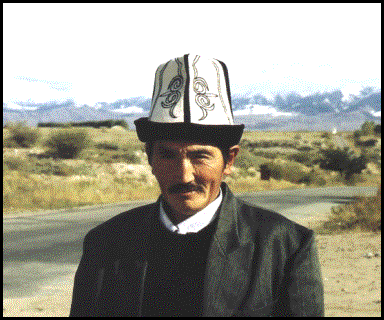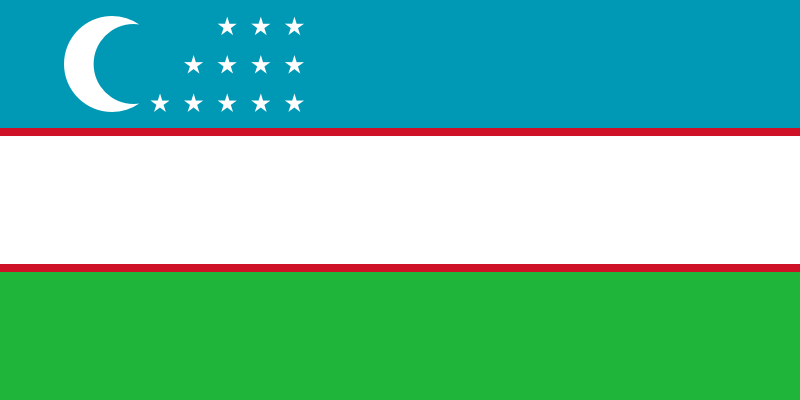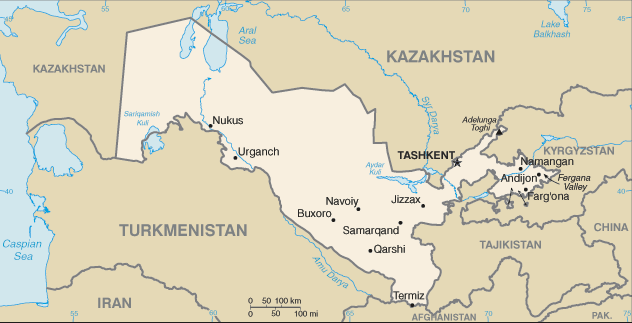Washington Publishers |
Uzbekistan
| Uzbekistan Webcam Coming
Soon... |
|
Territory of Uzbekistan was populated in the second millennium BC. There are findings of early human’s tools and monuments in Ferghana, Tashkent, Bukhara, Khorezm (Khwarezm, Chorasmia), Samarkand regions. The first civilizations to appear in Uzbekistan were Sogdiana, Bactria and Khwarezm (Chorasmia). Territories of these states became a part of the Persian Achaemenid empire in the 6th century, hence, becoming part of Persia for centuries. In fact, the Persian culture is preserved in Uzbekistan even today, as evident in many parts where Farsi (Persian) is spoken. Alexander the Great conquered Sogdiana and Bactria in 327 BC, marrying Roxana, daughter of a local Sogdian chieftain. However, the conquest was supposedly of little help to Alexander as popular resistance was fierce, causing Alexander's army to be bogged down in the region. Its territory was overrun by Genghis Khan and his Mongol tribes in 1220. In the 1300s, Timur (1336 - 1405), known in the west as Tamerlane, overpowered the Mongols and built an empire. In his military campaigns Tamerlane reached as far as the Middle East. He defeated Ottoman Emperor Bayezid I and rescued Europe from Turkish conquest. Tamerlane sought to build a capital of his empire in Samarkand (largely a Tajik-populated city). The imagery of Tamerlane would be used later in history to construct an Uzbek national identity. In the 19th century, the Russian Empire began to expand, and spread into Central Asia. The "Great Game" period is generally regarded as running from approximately 1813 to the Anglo-Russian Convention of 1907. Following the Bolshevik Revolution of 1917 a second less intensive phase followed. At the start of the 19th century there were some 2,000 miles (3,200 km) separating British India and the outlying regions of the Tsarist Russia. Much of the land in between was unmapped. By the beginning of the 20th century, Central Asia was firmly in the hands of Russia and despite some early resistance to Bolsheviks, Uzbekistan and the rest of Central Asia became a part of the Soviet Union. On August 31, 1991, Uzbekistan reluctantly declared independence, marking September 1 as a national holiday. In subsequent ethnic tensions, two million Russians left the country for Russia. A number of laws were deliberately designed to pressure and ultimately force the Russian population to leave Uzbekistan. The Russian Uzbeks have no legal status in Russia or any other country and thus are spread throughout the world particularly Europe and the U.S. On May 13, 2005, protests broke out in Andijan over the imprisonment of 23 Muslims accused of being Islamist extremists. The protesters took thirty hostages. Soldiers started to fire on the protesters, leaving many of them dead. The number of dead is greatly disputed varying from 176 to 1,000 (see the Chronology sidebar for details). On the same day in Tashkent, a man mistakenly believed to be a suicide bomber was shot dead outside the Israeli Embassy. The country now seeks to gradually lessen its dependence on agriculture
- it is the world's second-largest exporter of cotton - while developing
its mineral and petroleum reserves. source: wikipedia.org |

Came From: MSN.com
Searched: boy and girl in sex
Copyright © 2000 - 2009 All Rights Reserved Washington
Publishers
This web page is best viewed in 1024 x 768 resolution.
Last updated April 2009. Over 1,194,000 page views.
This web site is maintained by Washington Publishers, Tallahassee Florida,
USA, and uses Sun Domains and Software.
To have objectionable or potentially copyrighted material evaluated
for removal on this site, click
here.
Washington Publishers is not an affiliate of Inside
Washington Publishers.
Learn more about our current privacy
and information practices.


